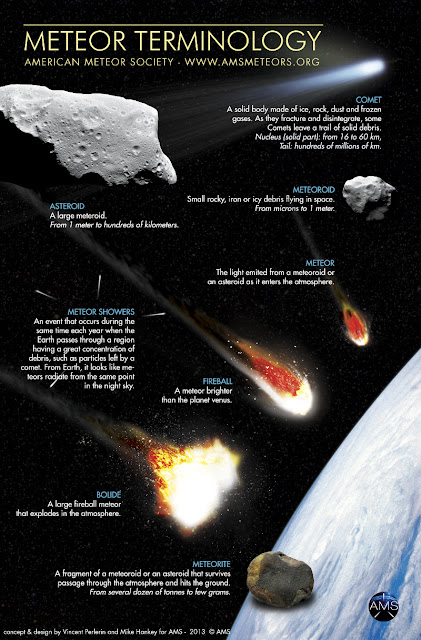Here is a simple and intuitive answer, provided in this beautiful infographic from the American Meteor Society.
Regarding this terminology: excluding "comet", and "meteor" - all of the others refer to the same type of object, which, is "asteroidal" in nature; that is, composed of rock, metal, or a mixture of both. Their origins are, usually, from comets, as well as from the asteroids within the Asteroid Belt. The Asteroid Belt lies between the orbits of Mars and Jupiter. Comets originate from the Oort Cloud, and from the Kuiper Belt. All are remnant matter left over from the formation of the Solar System.
 |
| Meteor Terminology - American Meteor Society - www.amsmeteors.org - Graphic concept and design by Vincent Perlerin and Mike Hankey for AMS - 2013. |
Note that the word, meteor, refers to the "light" emitted from a meteoritic object, and not the meteoritic object, itself, that is producing the light; therefore, a meteor and a falling star, technically, are not the same thing. In other words, a meteor is created by an object called a "meteoroid" (which, of course, can be "asteroidal", or, "cometary" in nature! 😁)
The April Fireballs, are a small collection of asteroidal and cometary debris that orbits the sun in an elliptical path. About the 15th, of every April, some of this material enters Earth's atmosphere, and combusts, in a spectacularly bright meteor called a "fireball".
Dale Alan Bryant
Senior Contributing Science Writer

No comments:
Post a Comment